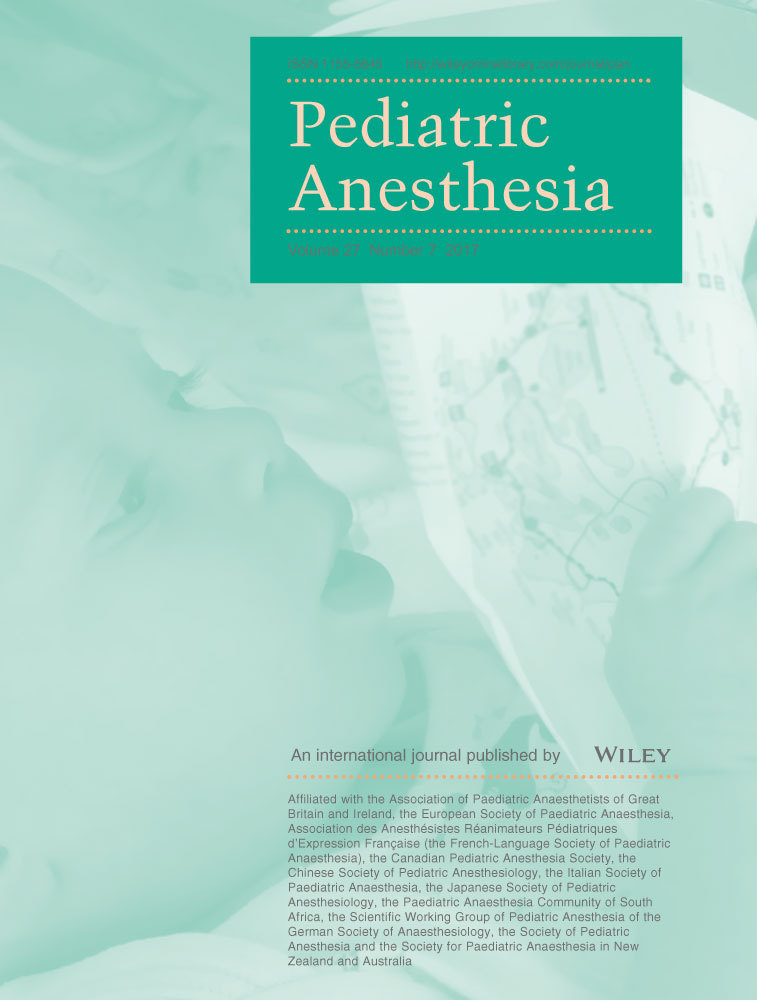Elevated intrathoracic CO2 pressure during thoracoscopic surgery decreases regional cerebral oxygen saturation in neonates and infants—A pilot study
Summary
Background
Intraoperative hypercapnia and acidosis are risk factors during thoracoscopy in neonates and infants.
Methods
In a prospective pilot study, we evaluated the effects of thoracoscopy in neonates and infants on cerebral microcirculation, oxygen saturation, and oxygen consumption. Regional cerebral oxygen saturation and blood flow were measured noninvasively using a new device combining laser Doppler flowmetry and white light spectrometry. Additionally, cerebral fractional tissue oxygen extraction and approximated oxygen consumption were calculated.
Fifteen neonates and infants undergoing thoracoscopy were studied using the above-mentioned method. The chest was insufflated with carbon dioxide with a pressure of 2-6 mm Hg. Single lung ventilation was not used. As control group served 15 neonates and infants undergoing abdominal surgery.
Results
Data are presented as median and range. The 95% confidence intervals for differences of means (95% CI) are given for the mean difference from baseline values.
We observed a correlation between intrathoracic pressure exceeding 4 mm Hg and transient decrease in regional cerebral oxygen saturation of 12.7% (95% CI: 9.7–17.2, P<.001). Peripheral oxygen saturation was normal at the same time.
Intraoperative increase in arterial paCO2 (median maximum value: 48.8 mm Hg, range: [36.5-65.4]; 95% CI: −16.0 to −3.0, P=.002) and decrease in arterial pH (median minimum value: 7.3, range: [7.2-7.4]; 95% CI: 0.04-0.12, P=.008) were observed during thoracoscopy with both parameters recovering at the end of the procedure.
Periods of regional cerebral oxygen saturation below 20% from baseline were significantly more frequent during thoracoscopy as compared to the control group (median maximum value: 1.3%min/h, range: [0.0-66.2] vs median maximum value: 0.0%min/h, range: [0.0-4.0]; 95% CI: −16.6 to −1.1, P=.028).
Conclusion
We suggest that thoracoscopic surgery in neonates and infants, although generally safe, may be associated with a decrease in regional cerebral oxygen saturation correlating with the applied intrathoracic pressure. According to our data an inflation pressure >4 mm Hg should be avoided during thoracoscopic surgery.




